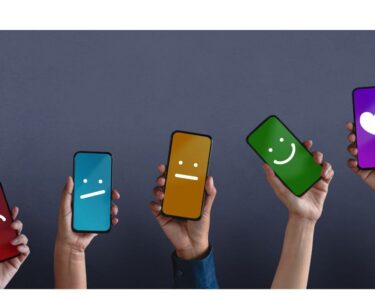A middle-range Whirlpool washing machine that in 1964 cost $200, or $1,520, can be bought today for less than $600. The magnitude of the price decline is the same for the $160 refrigerator offered back then. In both cases, they are not only cheaper but better.
Revolutionizing technology products was the microchip, invented only about a decade earlier. In a little-noticed reference in an electronics magazine only a year later, an engineer named Gordon Moore noted that the number of components in integrated circuits had doubled every year. Later dubbed Moore’s Law, and altered slightly over the years, the postulation that computing power grows exponentially — and the corollary that the price of computing power drops at a steady rate — explained the driving force that made the videophone call free.
It is hard to find a more graphic example of how technology drives down prices and provides better services to a wider group of people.
Prices noted elsewhere in ads in The New York Times for that week in June provide a few more lessons in the impact of technology on our lives. Ah, yes, the good old days, when you could buy a bottle of Heinz ketchup for 15 cents, or $1.14 in current dollars. Today that bottle is about the same price. A man’s seersucker suit at Brooks Brothers was $40, or $304 in today’s dollars. A similar suit, now made overseas, is $500, though during sales it goes for $348.
But look at the products that can be constantly improved upon or radically changed by technology, and it is a different story. A stereo system at Macy’s was advertised for $359, or $2,728. For many people, a stereo today is an iPhone and a Beats headphone for about $500.
A middle-range Whirlpool washing machine that in 1964 cost $200, or $1,520, can be bought today for less than $600. The magnitude of the price decline is the same for the $160 refrigerator offered back then. In both cases, they are not only cheaper but better.
Revolutionizing technology products was the microchip, invented only about a decade earlier. In a little-noticed reference in an electronics magazine only a year later, an engineer named Gordon Moore noted that the number of components in integrated circuits had doubled every year. Later dubbed Moore’s Law, and altered slightly over the years, the postulation that computing power grows exponentially — and the corollary that the price of computing power drops at a steady rate — explained the driving force that made the videophone call free.
There are a lot of ways to gauge the sudden success of video chat apps during the coronavirus pandemic. One would involve looking at the iOS App Store, where Zoom is ranked number one in the Business category, or where Houseparty ranks first among Social Networking apps. We could also look at users: Zoom has 300 million people chatting daily, up from 10 million in December, while Houseparty has seen 50 million signups over the last month.
But the most satisfying indicator is the response from tech giants such as Google, Facebook, and Microsoft. Now that video chat is a necessity, they’re scrambling to catch up and address their own products’ blind spots, many of which have lingered for years.
This is why I’m rooting for Zoom and Houseparty to succeed against the onslaught from tech giants. For too long, the likes of Facebook and Google have treated video chat as an afterthought, stagnating on innovative new features and capabilities. Only now, when other companies are snatching up their users, do they design it necessary to add things such as higher participant limits or shareable meeting links. Certainly, the pandemic itself is pushing them into action, but so is the threat of serious competition in an area that’s suddenly become important.
Look, for instance, at the dismay inside Facebook at the mere hint of a smaller rival gaining steam. As the New York Times‘s Mike Isaac and Sheera Frenkel reported last week, Facebook’s employees have “openly gawked” at Zoom’s surging usage numbers on internal message boards, and CEO Mark Zuckerberg has asked his teams to accelerate the launch of new video chat features.
Facebook isn’t the only one whose ego seems bruised. Google has boasted to Reuters about Meet’s own uptick in usage. And while Zoom was facing blowback over an array of security and privacy issues, Microsoft put out the blog equivalent of a subtweet, touting its existing policies without announcing anything new. Even though these companies are all seeing their own usage spike, the notion of another upstart competitor is just too much to bear.
LUMBERING GIANTS
The irony is that these tech colossi might have headed off Zoom and Houseparty a long time ago had they not been so prone to stumbling over themselves.
Microsoft, for instance, had a chance to dominate video chat after acquiring Skype in 2011. But as documented by The Verge’s Tom Warren last month, a slow transition away from peer-to-peer technology led to years of reliability issues, while a series of poorly received redesigns alienated fans and failed to attract new users. Given that Microsoft Teams seems to have a brighter future—both for businesses and consumers—Skype’s continued existence is just a point of confusion.
Google has struggled with a similar video chat identity crisis over the years, having pivoted its once-popular Hangouts app to business use in 2016 and leaving consumer video chat duties to Duo. Google’s inability to formulate a cohesive strategy for its communication apps is now the stuff of legend, and those stumbles helped open the door to alternatives.
As for Facebook, it’s been offering video chat inside Messenger since 2016, but that was also when Facebook was obsessed with turning the app into a platform for chatbots. Only recently has Facebook realized people would rather just use Messenger for personal communications and embarked on a major debloating campaign. Its own Portal video chat hardware has been a flop, only seeing an uptick in interest now that people are desperate to video chat on their TVs.
Even Apple’s steadfast refusal to port FaceTime onto non-Apple devices has become a liability. One could imagine a cross-platform version of FaceTime mopping the floor with every other video chat app, but Apple’s video chat service remains relegated to iOS devices and Macs. When it really matters, people don’t want to leave out friends and family members who might be using an Android phone or a Windows PC.
All of those stumbles have created a small window of opportunity for Zoom and Houseparty, which have taken advantage by making video chat as frictionless as possible. Zoom, for instance, is free to try, works on any device, and doesn’t require an account to join meetings, while Houseparty’s “in the house” alerts encourage friends to start chatting spontaneously.
A CHANCE TO WIN
Direct competition with tech giants’ own well-established services doesn’t happen much anymore. You don’t see startups trying to attract more users than Gmail or build a more popular spreadsheet editor than Excel. Facebook has its share of tangential competitors—TikTok and Snapchat among them—but attempts to build broad social networking alternatives have gone nowhere. With video chat, Zoom and Houseparty have the rare chance to outdo tech giants on a grand scale.





